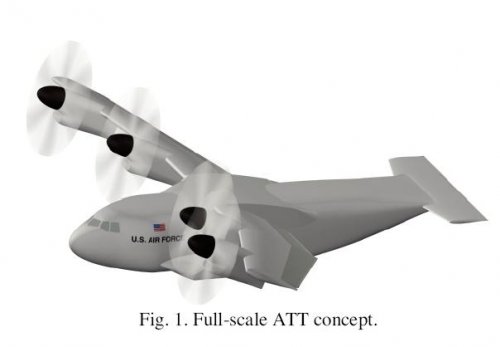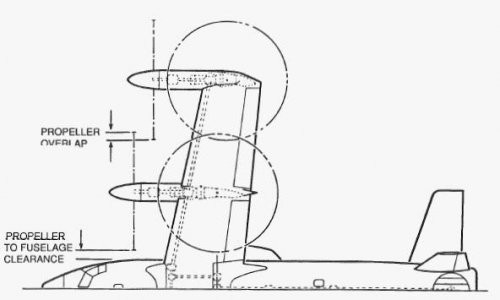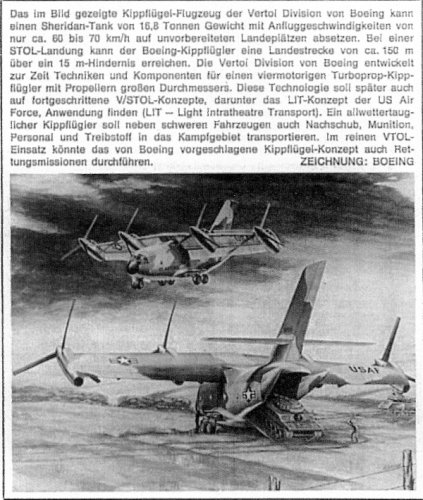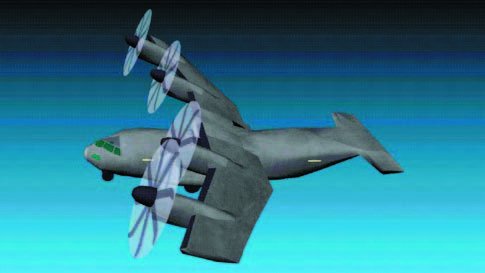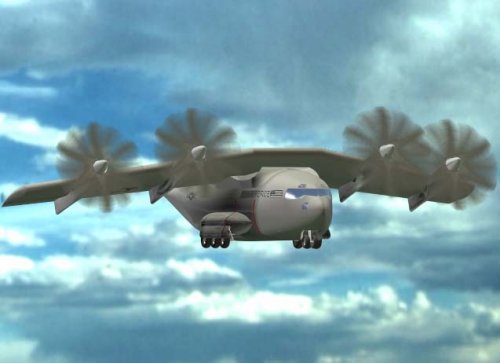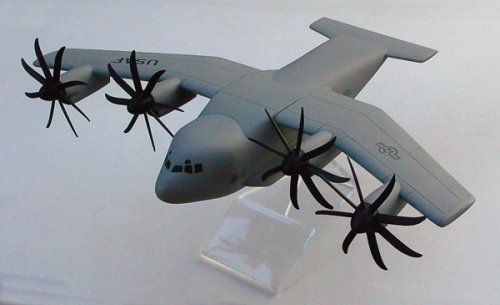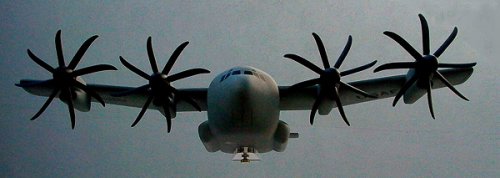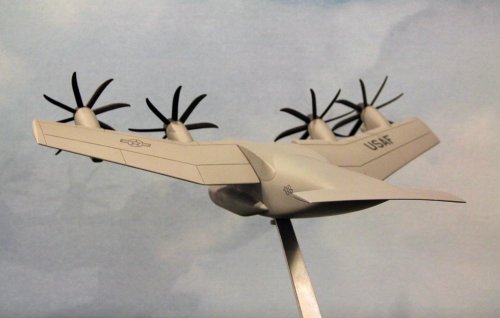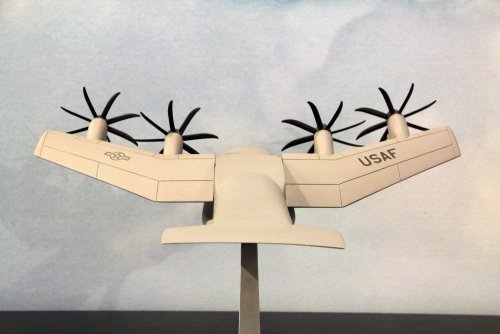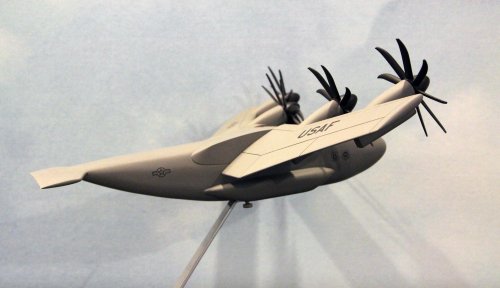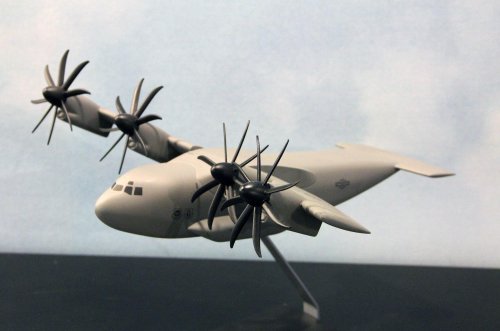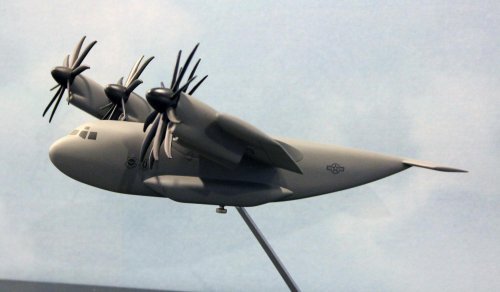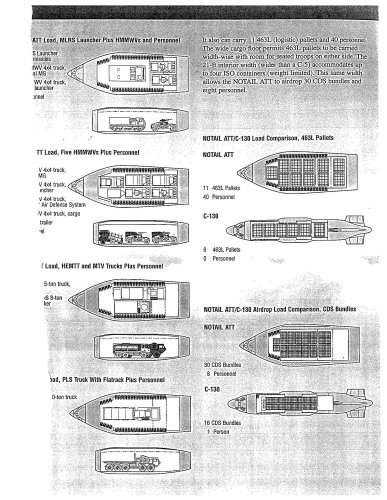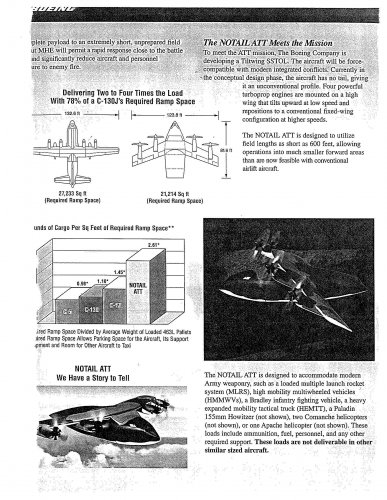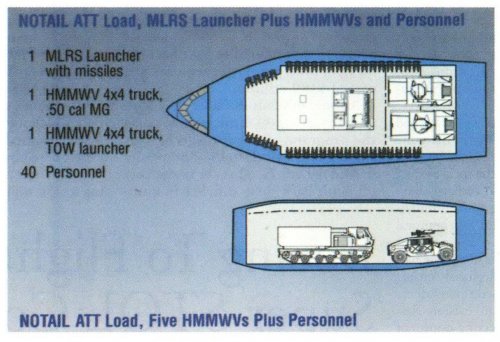You are using an out of date browser. It may not display this or other websites correctly.
You should upgrade or use an alternative browser.
You should upgrade or use an alternative browser.
Boeing Advanced Theater Transport (ATT) aka SuperFrog
- Thread starter yasotay
- Start date
- Joined
- 4 May 2008
- Messages
- 2,440
- Reaction score
- 678
not much of a technical comment, just a curiosity:
the earlier incarnation of the ATT, the stocky, tailless one was called Superfrog.
Later, it grew a horizontal tail (possibly to counter pitch moments?) and was dubbed "Super Lobster". I guess the planform does lead to a certain similarity with the crustacean (or is it an arachnopod?)...
I think the main designer was Blaine Rawdon of Phantomworks-Boeing South California Operations (BoSCO) (same guy responsible for the gigantic Pelican). Dave Manley was program manager.
I think the unnamed engines were rated at 11,400shp (which is curiously what a TP400 will do!). Takeoff gross weight was in the 340,000 lbs range. Payload was 2 Stryker vehicles and some troops if memory serves me.
The question between VTOL and ESTOL is an interesting one. The following is valid for a certain combination of weight and landing field length:
Since landing field length and required lift coefficient grow with the square of approach speed (give or take..), if you are really serious about ESTOL-landing a heavy airplane you will be approaching at such low speeds that
a) control with conventional aerodynamic surfaces might be out of the question (low dynamic pressure)
b) For the same reason, the wing isn't lifting much. Required lift coefficient probably exceeds what even USB or deflected airflow can provide. That leaves you with direct lift (hopefully augmented in some way) as one of the few alternatives.
c) Landing field length is defined usually over a fifty foot obstacle. If you are coming in at a 6 degree glideslope, you will have eaten 475 ft of runway even before you touch the ground
By the time you are done dealing with all these issues, you are carrying around enough engine, control systems, and big wing, that you might as well do VTOL.
Like i said, this is valid only if you are looking at something as heavy as Super Lobster and you are trying to land in 1,000ft. Relax one of the two requirements by a certain amount, and STOL becomes an option again.
the earlier incarnation of the ATT, the stocky, tailless one was called Superfrog.
Later, it grew a horizontal tail (possibly to counter pitch moments?) and was dubbed "Super Lobster". I guess the planform does lead to a certain similarity with the crustacean (or is it an arachnopod?)...
I think the main designer was Blaine Rawdon of Phantomworks-Boeing South California Operations (BoSCO) (same guy responsible for the gigantic Pelican). Dave Manley was program manager.
I think the unnamed engines were rated at 11,400shp (which is curiously what a TP400 will do!). Takeoff gross weight was in the 340,000 lbs range. Payload was 2 Stryker vehicles and some troops if memory serves me.
The question between VTOL and ESTOL is an interesting one. The following is valid for a certain combination of weight and landing field length:
Since landing field length and required lift coefficient grow with the square of approach speed (give or take..), if you are really serious about ESTOL-landing a heavy airplane you will be approaching at such low speeds that
a) control with conventional aerodynamic surfaces might be out of the question (low dynamic pressure)
b) For the same reason, the wing isn't lifting much. Required lift coefficient probably exceeds what even USB or deflected airflow can provide. That leaves you with direct lift (hopefully augmented in some way) as one of the few alternatives.
c) Landing field length is defined usually over a fifty foot obstacle. If you are coming in at a 6 degree glideslope, you will have eaten 475 ft of runway even before you touch the ground
By the time you are done dealing with all these issues, you are carrying around enough engine, control systems, and big wing, that you might as well do VTOL.
Like i said, this is valid only if you are looking at something as heavy as Super Lobster and you are trying to land in 1,000ft. Relax one of the two requirements by a certain amount, and STOL becomes an option again.
- Joined
- 18 October 2006
- Messages
- 3,884
- Reaction score
- 3,752
AeroFranz said:a) control with conventional aerodynamic surfaces might be out of the question (low dynamic pressure)
I now recall that one of the USAF concerns was with the technical challenges with needing to have independent pitch capability for all of the props to overcome some of the slow speed charecteristics of the aircraft. If I recall correctly there was to be cross shafting to all of the engines for engine out safety margins as well.
Abraham Gubler said:Dear Scott, is there an ETA on making Air Drawings 1 through 30 available by download for purchase?
They are now all available (except #13): http://www.up-ship.com/drawndoc/drawndoc.htm
- Joined
- 1 May 2007
- Messages
- 2,460
- Reaction score
- 1,453
It's such an amazing aircraft, too bad it had never gone into production
i still think it looks a bit strange without a vertical fin...
cheers,
Robin.
A
avatar
Guest
here it is !
http://www.defensetech.org/archives/004237.html
http://www.defensetech.org/archives/004237.html
Intersting pdf about landing a potential ATT.
http://ntrs.nasa.gov/archive/nasa/casi.ntrs.nasa.gov/20030071140_2003085931.pdf
Have attached as a pdf as link does not work any more.
http://ntrs.nasa.gov/archive/nasa/casi.ntrs.nasa.gov/20030071140_2003085931.pdf
Have attached as a pdf as link does not work any more.
Attachments
Last edited:
Yuck, running a gearbox through that hinge, while keeping the hinge light, would not be a great deal of fun. I wonder how the weight tradeoff was for that great beast of a driveshaft vs. a little turboshaft in the extreme tail. I mean a PT6 only weighs 500lb or so, and frankly would probably be just as reliable as some nasty shaft mess.
Just call me Ray
ACCESS: Top Secret
- Joined
- 26 August 2007
- Messages
- 672
- Reaction score
- 42
I always thought it was a rather highly unusual approach, since they've just about remade the aircraft anyway.
- Joined
- 18 October 2006
- Messages
- 3,884
- Reaction score
- 3,752
To bad nothing the USAF has shown to date appears to comes close to meeting the requirements of their primary customer. Nor do they meet any of the anti-access considerations that are so prevalent in US writings.
Actually let me correct that. The Army was very keen on the Boeing Advanced Tactical Transport concept. It appears they do not want to buy new aircraft with propellers. Although the new CoSAF appears to have different thoughts from the old school.
Actually let me correct that. The Army was very keen on the Boeing Advanced Tactical Transport concept. It appears they do not want to buy new aircraft with propellers. Although the new CoSAF appears to have different thoughts from the old school.
- Joined
- 13 June 2007
- Messages
- 2,031
- Reaction score
- 2,258
Greetings All -
A few pics of the ATT display model in the Boeing Prologue Room here in St. Louis.
Enjoy the Day! Mark
A few pics of the ATT display model in the Boeing Prologue Room here in St. Louis.
Enjoy the Day! Mark
Attachments
- Joined
- 11 March 2006
- Messages
- 8,610
- Reaction score
- 3,077
The question may be, why they are back on the horizontal surface, although the older designs actually were tail-less.
Because for pitch still a longer momentum arm is needed ? The fin probably can be much easier substituted by differential
thrust from those rotoprops, I think.
Because for pitch still a longer momentum arm is needed ? The fin probably can be much easier substituted by differential
thrust from those rotoprops, I think.
shedofdread
ACCESS: Top Secret
- Joined
- 14 November 2009
- Messages
- 582
- Reaction score
- 354
With a tailplane [or canard], you can trim to a higher CLmax than with a tailless platform. What that translates to in this environment is more weight lifted. Also, tailless platforms can be quite sensitive to C/G location whereas there will be a larger range of acceptable C/G locations with a tail. This is important for a cargo carrying A/C.
Considering the anything but low RCS nature of the tilt-wing thing, is it possible that the fin is missing from the model? Doesn't seem worth getting rid of the fin (with the 'fun' that brings...) when the rest hasn't had LO design principles applied...
that brings...) when the rest hasn't had LO design principles applied...
Considering the anything but low RCS nature of the tilt-wing thing, is it possible that the fin is missing from the model? Doesn't seem worth getting rid of the fin (with the 'fun'
Mat Parry
ACCESS: Secret
- Joined
- 25 January 2011
- Messages
- 417
- Reaction score
- 24
Sorry, you are correct, when using the term "tailless" what I actually meant was the "lack of a vertical stabilizer". By looking back to the beginning of this thread I think we can discount the lost fin hypothesis.
I agree that LO seems an unlikely consideration for the ATT model. I also considered differential thrust as a method of yaw control (as thought to be used on the B-2A to induce flat turns, presumably flat turns are desirable to maintain the B-2A's VLO characteristics).
Having discounted LO as a driver for the ATT, a differential thrust method would seem overly complicated and I wonder if this system would react quickly enough... I don't know enough about aircraft control systems but to my uneducated eye, landing in gusting cross winds might be..... exciting?
maybe adjusting the pitch of the props in the opposite manner on either side of the aircraft would be fast enough, increasing and decreasing RPM on either side seems unlikely to cut it, maybe a combination of these 2 approaches works synergistically*
*(in my experience synergistic effects are marketing coming directly from R&D departments, additive is usually a more accurate term)
I agree that LO seems an unlikely consideration for the ATT model. I also considered differential thrust as a method of yaw control (as thought to be used on the B-2A to induce flat turns, presumably flat turns are desirable to maintain the B-2A's VLO characteristics).
Having discounted LO as a driver for the ATT, a differential thrust method would seem overly complicated and I wonder if this system would react quickly enough... I don't know enough about aircraft control systems but to my uneducated eye, landing in gusting cross winds might be..... exciting?
maybe adjusting the pitch of the props in the opposite manner on either side of the aircraft would be fast enough, increasing and decreasing RPM on either side seems unlikely to cut it, maybe a combination of these 2 approaches works synergistically*
*(in my experience synergistic effects are marketing coming directly from R&D departments, additive is usually a more accurate term)
Mat Parry
ACCESS: Secret
- Joined
- 25 January 2011
- Messages
- 417
- Reaction score
- 24
Kadija_Man said:Don't most large turboprops rotate at constant RPM and the angle of the blades are changed to increase or decrease thrust, effectively giving an effect like a throttle?
Mat Parry said:
maybe adjusting the pitch of the props in the opposite manner on either side of the aircraft would be fast enough
It would seem to me that using this method of differential thrust would also induce some roll when the wings are tilted, just to add some extra... excitement to those landings
EDIT
Even I am not enjoying the tone of my posts today (been grumpy all day) apologies.
Clearly Boeing know what they are doing, clearly I don't know what I'm talking about :-[ I was just wondering what advantage is gained by not having a fin on this design bearing in mind it's intended application?
- Joined
- 4 May 2008
- Messages
- 2,440
- Reaction score
- 678
The propellers have both cyclic and collective controls on this particular design. I assume they are a major control effector in all axes and are (in the intention of the designer) replacing the role of the vertical fin at low speed. Remember, the fin is pretty ineffective at low speed anyway. For high speed flight, split ailerons provide yaw.
- Joined
- 25 June 2009
- Messages
- 13,793
- Reaction score
- 3,118
Mat Parry asked the very same question I wanted to ask: beside the technical prowess, is there any REAL advantage in not having a tail fin in this design? To me the aircraft looks pretty off-balance. It seems as if there's a lot of weight to the front and none to the rear. Was there a flaw in the four-rotor configuration? Anyway, I guess the Boeing engineers are smart enough to know what they're doing, but it sure does look weird.
Also, whatever the added empennage is for, compared to earlier renditions that had no tail at all, I do wonder what such a small tail (and fixed, too, it seems) could possibly change to the flight characteristics of such a bulky machine.
Finally, Sundog's comment about storing the aircraft more easily has not quite convinced me, because a tail can always be made to fold up, and also because I'm not sure it would be much taller than the propellers themselves.
Also, whatever the added empennage is for, compared to earlier renditions that had no tail at all, I do wonder what such a small tail (and fixed, too, it seems) could possibly change to the flight characteristics of such a bulky machine.
Finally, Sundog's comment about storing the aircraft more easily has not quite convinced me, because a tail can always be made to fold up, and also because I'm not sure it would be much taller than the propellers themselves.
Mat Parry
ACCESS: Secret
- Joined
- 25 January 2011
- Messages
- 417
- Reaction score
- 24
Thank you all, I hadn't considered (or found information on) the application of cyclic control on the prop rotors. Thinking inside the thimble again! An interesting concept that isn't straightforward to get a feel for (to me at least)
- Joined
- 18 October 2006
- Messages
- 3,884
- Reaction score
- 3,752
If memory serves (debatable these days) when the Army asked what happened to the tail, the answer did come back that it was not needed and thus taking it off reduced weight. The aircraft slow speed control was to be done by differential thrust. I am way out of my lane but I think there was some issue with dealing with the "hub moment" of the props, especially in pronounced cross wind conditions.
An interesting note, the ATT was the last fixed wing cargo solution that the US Army had any interest in that the USAF proposed.
An interesting note, the ATT was the last fixed wing cargo solution that the US Army had any interest in that the USAF proposed.
Avimimus
ACCESS: Top Secret
- Joined
- 15 December 2007
- Messages
- 2,235
- Reaction score
- 501
Stargazer2006 said:Was there a flaw in the four-rotor configuration? Anyway, I guess the Boeing engineers are smart enough to know what they're doing, but it sure does look weird.
Tip losses from having four wings?? The front props lowering the efficiency of the rear props??
- Joined
- 25 June 2009
- Messages
- 13,793
- Reaction score
- 3,118
Avimimus said:Stargazer2006 said:Was there a flaw in the four-rotor configuration? Anyway, I guess the Boeing engineers are smart enough to know what they're doing, but it sure does look weird.
Tip losses from having four wings?? The front props lowering the efficiency of the rear props??
Possibly. After I wrote the above I realized that the four-rotor configuration (V-44/QTR) was not for the ATT program but something earlier than that, anyway.
- Joined
- 18 October 2006
- Messages
- 3,884
- Reaction score
- 3,752
Thank you, yasotay.
Similar threads
-
Boeing FTR (Future Transport Rotorcraft) concepts from 1999
- Started by flateric
- Replies: 5
-
Advanced Medium STOL Transport (AMST) and its predecessors
- Started by Pioneer
- Replies: 216
-
-
1970s Boeing Advanced Bomber Studies
- Started by Sundog
- Replies: 112
-

